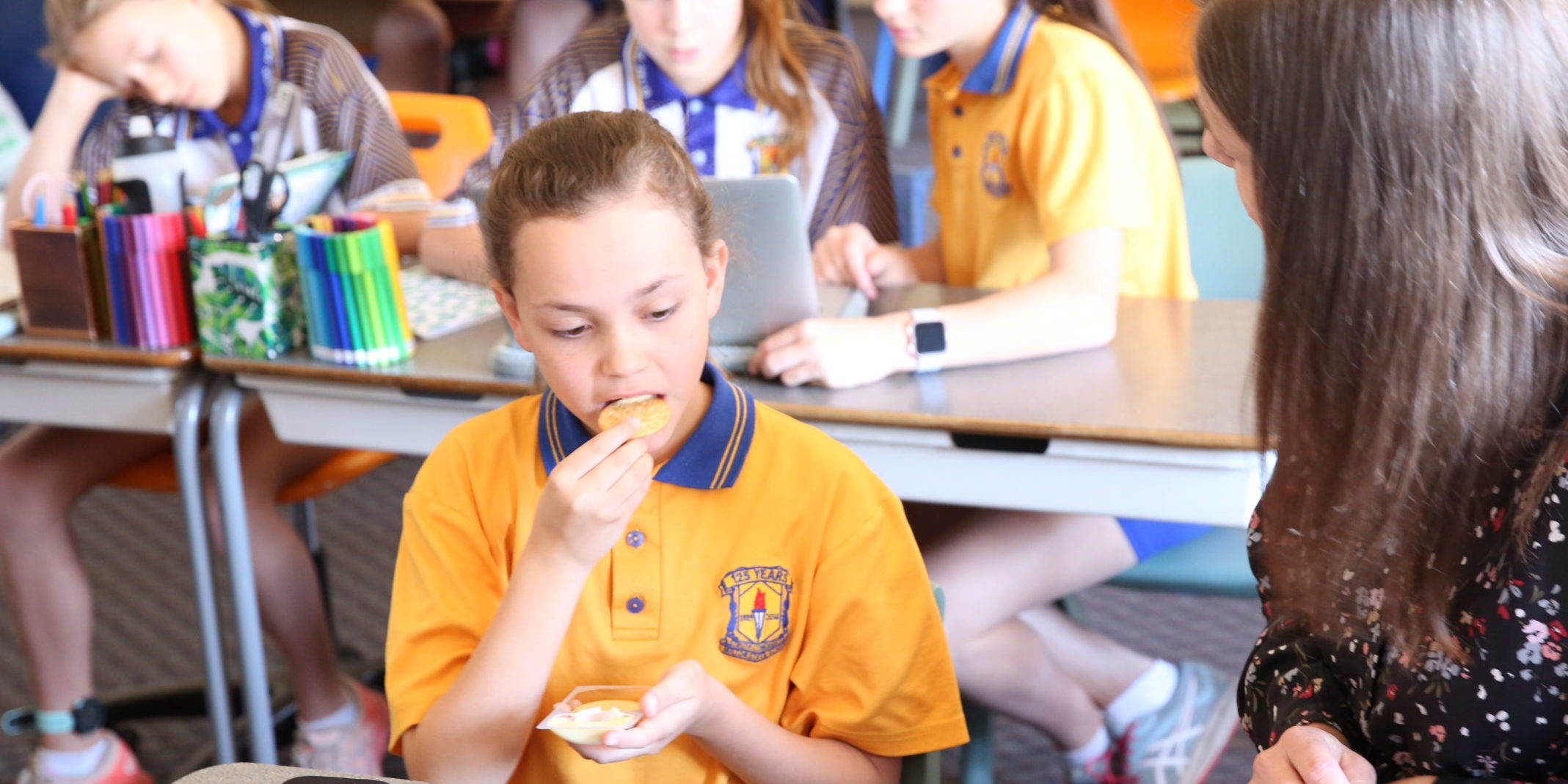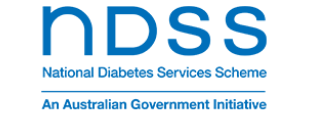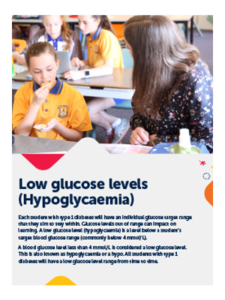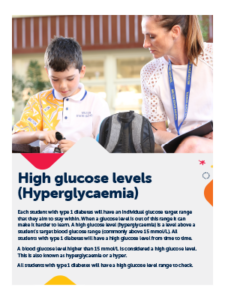Even when a student is doing their best to manage type 1 diabetes while at school there will be times when glucose levels can go too low or too high just like at home
Each student with type 1 diabetes will have a blood glucose target range that has been set by their clinical treating team and is outlined in their diabetes management plan.
A low blood glucose level is known as hypoglyceamia and can happen when a student has had too much insulin or not enough carbohydrate food for their level of activity. It is not unusual for students to experience low glucose levels from time to time.
Symptoms of low glucose may include looking pale, shaking or sweating, feeling hungry, tired, weak, dizzy or being unable to concentrate.
A low glucose level must be treated immediately. If left untreated it may lead to loss of consciousness.
A very high blood glucose level can happen when the student doesn’t have enough insulin, does less physical activity than usual, is unwell, or eats extra carbohydrate foods without extra insulin being administered.
Symptoms of high glucose include feeling thirsty and frequently needing to go to the toilet, feeling tired and/or emotional or having difficulty concentrating.
A high glucose level must be taken seriously if the student is unwell. Staff should refer to a student’s diabetes management plan for advice.
All school staff should have a basic understanding of the signs and symptoms of low and high glucose levels and know how to help a student experiencing a low or high glucose level. It’s recommended staff undertake Diabetes in Schools Level 1 Introductory training to gain an understanding of what is required when caring for a student with type 1 diabetes. >> Read More about training school staff





